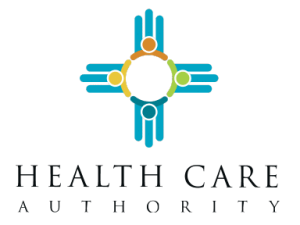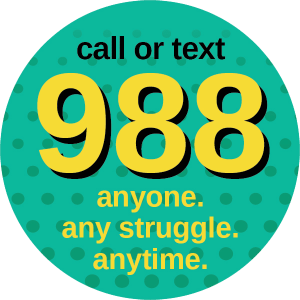February is Teen Dating Violence Prevention & Marijuana Awareness Month
Preventing Dating Violence and Marijuana Use Among Youth
Teen Dating Violence Prevention
Domestic violence affects more than 10 million adults in the U.S. each year, but did you know about 1 in 3 American teens also experiences dating violence and abuse? February is Teen Dating Violence (TDV) Awareness Month, a time to highlight the problem of abusive relationships that many youth face, educate others on the warning signs of dating violence and work towards preventing it.
Here are some common forms of dating violence:
- Physical Abuse can include hitting, biting, shoving, hair-pulling, kicking, and scratching.
- Emotional or Psychological Abuse includes name-calling, bullying, shaming, intentionally embarrassing, manipulating, and constant monitoring or controlling.
- Sexual Abuse is forcing a teen partner to engage in a sexual act against or without their consent.
- Stalking means repeatedly following or harassing a teen partner in a way that causes them reasonable fear for their safety or well-being.This can also include online stalking, and can happen on social media.
While any gender can be a victim of TDV, girls are at the highest risk. Almost a quarter of U.S. teenage girls report being in an abusive relationship. Girls and young women aged 16-24 are three times more likely than any other demographic to be abused by a romantic partner.
Additionally, LGBTQIA+ high schoolers are at increased risk for higher rates of physical and sexual dating violence compared to students who identify as heterosexual.
Teens affected by dating violence are more likely to experience:
- Depression
- Anxiety
- Aggression
- Alcoholism or drug abuse
- Eating disorders
- Thoughts of suicide
The best way to prevent TDV is to have honest conversations with our children about what healthy relationships look like. Teens who are experiencing TDV may feel ashamed, afraid or embarrassed to come forward about it. Talking about the risks of dating violence is an important first step in preventing it from happening. Teaching teens about what trust and respect looks like in relationships will build a foundation for healthy behavior.
If you or someone you know has experienced dating violence, help is available and recovery is possible. There are 31 organizations in New Mexico that provide domestic violence services at some level. The New Mexico Human Services Department, Behavioral Health Services Division (BHSD) can connect teens in need with help. They partner with many local agencies on the ground to provide services, such as group therapy and individual counseling for survivors of domestic violence or sexual assault. BHSD also has a new dedicated LGBTQIA+ outreach and awareness program.
Find immediate support for those affected by or causing dating violence at Treatment Connection: www.treatmentconnection.com. This site enables those seeking mental health treatment for themselves or their loved ones to find local, state-vetted treatment providers.
For youth in New Mexico, help is available through #988, the new crisis lifeline number. Youth of any age can call, text or chat #988 to be connected to the support they need 24 hours a day, 365 days a year.
Marijuana Awareness Month
Marijuana is the most commonly used drug in the United States, especially for youth. Almost 28% of high school students in New Mexico report using marijuana. Studies suggest use in early youth can affect teen brain development—and may negatively affect decision-making. Heavy, regular (daily or almost daily) cannabis use among youth may make it harder for them to learn, retain memories and pay attention. Early youth marijuana use can be associated with:
- Increased school drop-out rates
- Increased risk for psychotic disorders in adulthood
- Increased risk for later depression
- Suicidal ideation or behavior
If you are worried about your teens using it, especially because cannabis is now available now in gummies, candies and sodas, it’s important to talk freely with your family so they understand the risks.
SAMHSA’s brochure: Talking With Your Child About Marijuana: Keeping Your Kids Safe is a great resource for parents and caregivers to guide conversations.
The Behavioral Health Division of the NM Human Services Department (BHSD) has programs that can help both youth and adults. The Office of Substance Abuse Prevention (OSAP) is dedicated to substance abuse prevention throughout New Mexico. We’ve listed resources here in order to help you find the help you need.
When it comes to Teen Dating Violence and Marijuana Awareness, there are multiple ways to get involved and be a positive advocate for prevention. Start conversations with your friends, families and coworkers about the impact of dating violence and marijuana use for teens and youth. Together, we can take a dose of wellness and build healthy, thriving communities.
Resources
Teen Dating Violence
Behavioral Health Division of the NM Human Services Department (BHSD)
Find a Mental Health Treatment Provider
LGBTQIA+ Domestic Violence Hotline – 617-742-4911 (voice) • 800-832-1901 (Toll-Free)
REACH NM – (505) 591-9444 (Youth Resources)
National Domestic Violence Hotline (phone & chat resources for victims)
New Mexico Victim/Survivor Service Providers (PDF)
Domestic Violence Offender Treatment and Intervention Programs (PDF)
CDC Fast Facts: Preventing Teen Dating Violence
What is Teen Dating Violence? Teen Dating Violence Awareness Month
How Teen Dating Violence Impacts Indigenous and LGBTQ+ Youth
Coalition to Stop Violence Against Native Women
New Mexico Coalition Against Domestic Violence
Domestic Violence Resource Center
Marijuana Awareness and Prevention
New Mexico Office of Substance Abuse Prevention and Treatment
OSAP Treatment and Service Providers
The Harm Reduction Program: This program works to reduce drug-related harm while enhancing individual, family, and community wellness, primarily through the provision of linguistically appropriate and culturally competent services
Positive Peer Stories on the State of New Mexico’s Behavioral Health Services Division Website
Treatment is Effective: An Interview With Jamie
The New Mexico ATODA Prevention Workforce Training System
SAMHSA – Talking With Your Child About Marijuana: Keeping Your Kids Safe Brochure
SAMHSA – Preventing Marijuana Use Among Youth
State Estimates of Adolescent Marijuana Use and Perceptions of Risk of Harm From Marijuana Use

